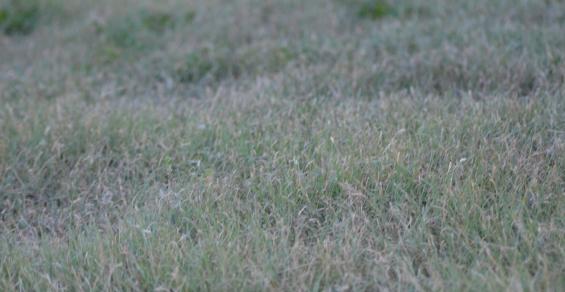What would be your recommendations for planting and maintaining buffalograss for our farmyard and lawn? Hot, sunny and dry conditions are facts of life in Nebraska. If your lawn has suffered in recent years from drought, or you just want to switch to a low-maintenance, drought-tolerant alternative, it might be worthwhile to consider buffalograss.
It’s native to Nebraska and well adapted to our growing conditions and soil types — particularly clay soil. It’s also very drought-tolerant and low-growing, so watering and mowing are reduced once it’s established.
Big difference
If you’re considering establishing a buffalograss lawn, it’s important first to understand how it differs from standard turfgrasses — Kentucky bluegrass and tall fescue.
Buffalograss is a warm-season grass, growing most actively under warm, midsummer conditions. It begins growth later in spring than Kentucky bluegrass and tall fescue, which are both cool-season grasses. And buffalograss goes dormant earlier in fall, usually after the first hard frost. So overall, it has a shorter growing season.
Buffalograss is a monecious plant, naturally having completely separate male and female plants, or plants with separate male and female flowers. This is important to understand because the male pollen heads are held above the grass blades, giving the turf a wilder or prairie look.
Consider which look you prefer — with pollen heads or without — when choosing the buffalograss cultivar to use in your yard. Seeded cultivars have both male and female plants; vegetative cultivars are primarily female plants.
To grow well, buffalograss requires full sun — a minimum of eight hours of direct sun each day. It won’t grow well under even partial shade, so you’ll have to make plans to manage the shady portions of your landscape without turfgrass.
Several buffalograss cultivars are available, most developed through the turfgrass breeding program at the University of Nebraska-Lincoln. Breeding efforts have focused on developing buffalograss cultivars with darker green color, early green-up and good turf density.
Seeded cultivars
Seeded cultivars contain both male and female plants, so these do produce male flowers:
Sundancer. Released in 2014, Sundancer has darker green color, faster establishment and improved canopy density compared to older cultivars. Once established, it outperforms other buffalograsses for turfgrass quality, density, color and spring green-up.
Bowie. Released in 2001, Bowie has medium green color with fine leaf texture and good turf density. It also has improved color, compared to older cultivars, along with quicker establishment, winter hardiness and early spring green-up.
Cody. Released in 1995, it’s a reliable performer against which other buffalograss cultivars are measured. It’s widely adapted with good density and drought tolerance.
Vegetative cultivars
Vegetative cultivars are sold as either sod or plugs, and both are female lines with very few male flowers:
Legacy. Available on the market since 2000, Legacy is a darker green, low-growing and very dense grass with excellent turfgrass quality.
Prestige. Available on the market since 2003, Prestige has bright, green-colored leaves and increased resistance to the buffalograss chinch bug. It has earlier spring green-up and stays green longer in fall than other vegetative buffalograss cultivars.
Establishment
June is the best time of year to establish buffalograss, either by seed, sod or plugs. For any planting method to be successful, good site preparation is essential.
Buffalograss cannot be successfully overseeded into an existing cool-season lawn, such as Kentucky bluegrass or tall fescue. Cool-season grasses are competitive enough to prevent the buffalograss seedlings from establishing or spreading.
If planning to convert an existing lawn, first either remove the existing grass with a tractor or sod cutter, or kill it with a nonselective herbicide. If you decide to use a nonselective herbicide, once the old grass is dead, you can mow it short but allow it to remain in place. It will help to prevent erosion while the new grass becomes established. Then you can seed or plug into the dead grass.
For more specifics on establishing a buffalograss lawn, refer to “Establishing a Buffalograss Turf in Nebraska,” G1946 at go.unl.edu/buffalograss. Get more information by emailing [email protected] or calling 402-441-7180.
Browning is a Nebraska Extension educator based in Lincoln, Neb.
Farm and Garden: Low-maintenance buffalograss is a native that can make for beautiful and practical turf.





